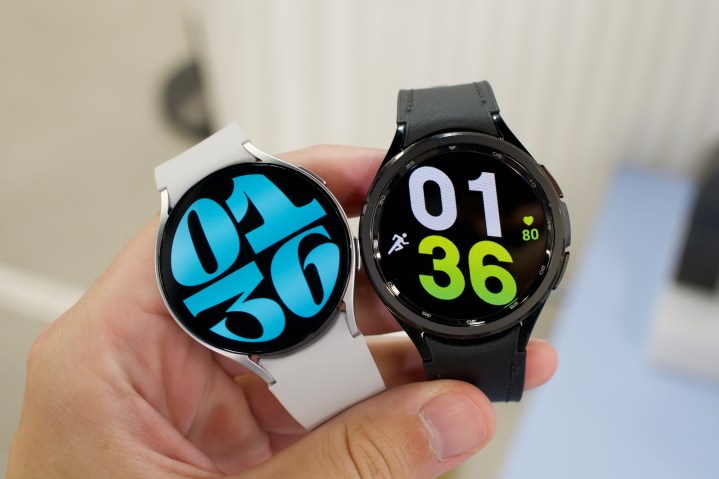
The Galaxy Watch 6 and Galaxy Watch 6 Classic are among the most popular smartwatches of 2024. Offering heaps of functionality and customization options, they’re an easy recommendation for anyone who owns an Android smartphone. But while the two have very similar names, there are some key differences between these two Samsung wearables.
Much like the Apple Watch Ultra differs from the Apple Watch SE, so too does the Galaxy Watch 6 Classic differ from the Galaxy Watch 6. Both are easy recommendations for shoppers — but each comes with its own set of advantages that might make one more compelling for your wrist than the other.
From available sizes and colors to display quality and sensors, here’s a closer look at the Galaxy Watch 6 and Galaxy Watch 6 Classic.
Samsung Galaxy Watch 6 vs. Galaxy Watch 6 Classic: specs
| Samsung Galaxy Watch 6 | Samsung Galaxy Watch 6 Classic | |
| Material | Armor Aluminum case with Sport Band | Stainless Steel case with Hybrid Eco-Leather Band |
| Sizes | 40mm
44mm |
43mm
47mm |
| Colors | Graphite
Gold (40mm only) Silver (44mm only) |
Black
Silver |
| Dimensions and weight | 44mm: 42.8 x 44.4 x 9.0 mm, 33.3g
40mm: 38.8 x 40.4 x 9.0 mm, 28.7g |
47mm: 46.5 x 46.5 x 10.9 mm, 59.0g
43mm: 42.5 x 42.5 x 10.9 mm, 52.0g |
| Display | Super AMOLED
Full Color Always On Display 40mm: 1.3-inch (33.3mm) 432 x 432 44mm: 1.5-inch (37.3mm) 480 x 480 |
Super AMOLED
Full Color Always On Display 43mm: 1.3-inch (33.3mm) 432 x 432 47mm: 1.5-inch (37.3mm) 480 x 480 |
| Durability | IP68 water and dust resistance with 5ATM underwater resistance | IP68 water and dust resistance with 5ATM underwater resistance |
| Processor | Exynos W930 Dual Core 1.4Ghz | Exynos W930 Dual Core 1.4Ghz |
| RAM | 2GB | 2GB |
| Storage | 16GB | 16GB |
| Battery | 40mm: 300mAh
44mm: 425mAh |
43mm: 300mAh
47mm: 425mAh |
| Charging | Fast Charging with WPC-based wireless charging | Fast Charging with WPC-based wireless charging |
| Operating system | Wear OS 4 with One UI 5 Watch | Wear OS 4 with One UI 5 Watch |
| Sensors | Samsung BioActive Sensor (Optical Heart Rate + Electrical Heart Signal + Bioelectrical Impedance Analysis)
Temperature Sensor Accelerometer Barometer Gyro Sensor Geomagnetic Sensor Light Sensor |
Samsung BioActive Sensor (Optical Heart Rate + Electrical Heart Signal + Bioelectrical Impedance Analysis)
Temperature Sensor Accelerometer Barometer Gyro Sensor Geomagnetic Sensor Light Sensor |
| Price | Starts at $250 | Starts at $340 |
| Review | Galaxy Watch 6 review | Galaxy Watch 6 Classic review |
Samsung Galaxy Watch 6 vs. Galaxy Watch 6 Classic: design
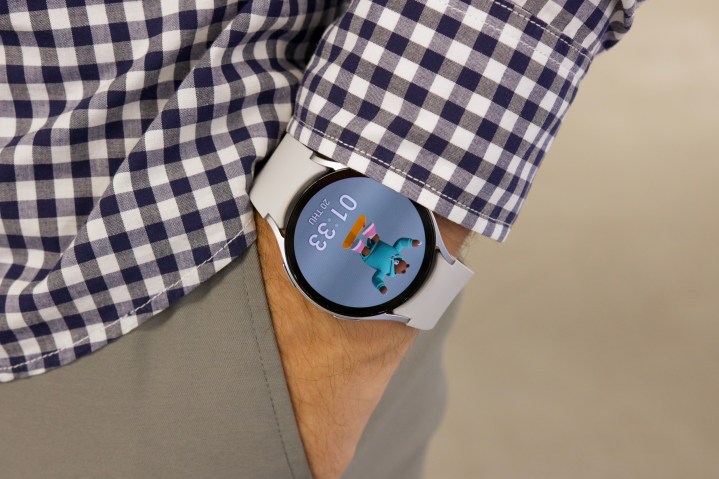
The design of both smartwatches is similar, but there are definitely some differences. Let’s take a closer look.
For the Galaxy Watch 6, the design is almost identical to the Galaxy Watch 5. Though the physical size is slightly smaller than the previous version, the display is actually a bit larger than before. It also looks sportier and simpler compared to the Classic model thanks to the lightweight armor aluminum case, and it comes with a Sport Band by default. You can choose from two sizes: 40mm and 44mm. The 40mm model comes in Graphite and Silver colors, and the 44mm version is available in Graphite and Gold.
The Galaxy Watch 6 has the same sapphire crystal glass as previous generations, making it durable enough to withstand whatever everyday life throws at it. The Watch 6 also has an IP68 dust- and water-resistance rating, with underwater resistance up to 5ATM, allowing you to wear it while swimming.
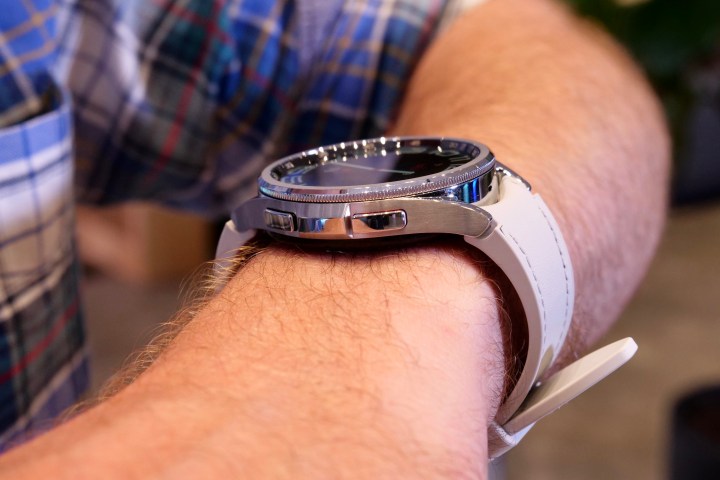
With the Galaxy Watch 6 Classic, you have a design that is more akin to a traditional timepiece. The key feature in the design is the rotating bezel, which is making a grand return after being skipped over in the previous generation. But if you’re worried that the rotating bezel is too much, it’s actually 15% thinner than on the Galaxy Watch 4 Classic, which was the last Galaxy Watch with the feature. The rotating bezel on the Galaxy Watch 6 Classic has a good grip to it, making it easy to use, and it doesn’t ruin the clean lines of the overall watch design.
Unlike the regular Galaxy Watch 6, the Classic version has a stainless steel case and comes with a Hybrid Eco-Leather Band, which leans into the more traditional watch aesthetic. The hybrid part means that it has rubber next to your skin and the leather is on the exterior, so it ends up being durable, sweat-resistant, and looks fantastic while being comfortable. It also comes in two sizes — 43mm and 47mm — and both sizes are available in either Black or Silver colors.
The front display is protected with sapphire crystal glass and has the same IP68 dust- and water-resistance rating and 5ATM underwater resistance as the standard Galaxy Watch 6.
Samsung Galaxy Watch 6 vs. Galaxy Watch 6 Classic: screen

Despite some differences in the design, the screens on both the Galaxy Watch 6 and Galaxy Watch 6 Classic are almost identical, other than the case size.
Both smartwatches feature Super AMOLED panels with a full-color always-on display. For the smaller watches (40mm regular and 43mm Classic), the display is 1.3 inches (33.3mm) and has a 432 x 432 resolution. On the larger models (44mm regular and 47mm Classic), the displays are 1.5 inches (37.3mm) and have a 480 x 480 resolution.
Again, sapphire crystal glass coating is found on both models and all sizes of the Galaxy Watch 6, so the Super AMOLED panel should be safe and sound from scratches and scuffs from everyday wear.
Samsung Galaxy Watch 6 vs. Galaxy Watch 6 Classic: processor and software
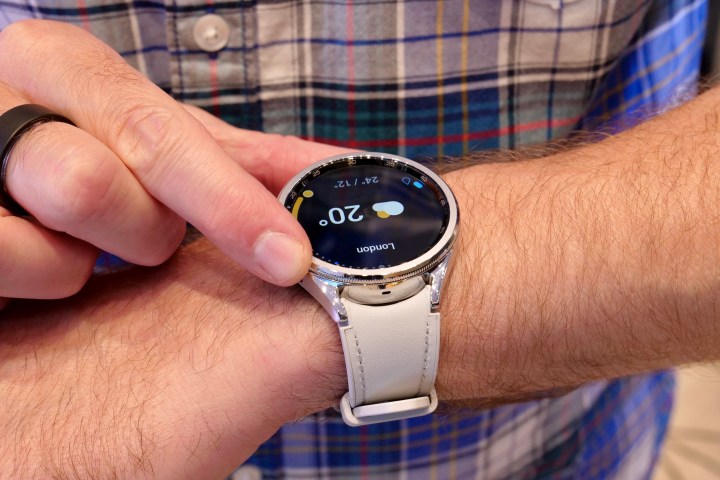
Samsung has packed both the Galaxy Watch 6 and Galaxy Watch 6 Classic with the same Exynos W930 Dual-Core 1.4GHz processor inside. Both watches also have 2GB of RAM with 16GB storage capacity. On the software side, Wear OS 4 comes equipped on both models, with the One UI 5 Watch interface layered on top.
While you won’t be playing graphically intensive games on your wrist, processor upgrades are nice to have. The Exynos W930 chip allows the Galaxy Watch 6 and Classic models to open up apps about 18% faster than last year’s models, and the smartwatches are more snappy overall.
And with One UI 5 Watch, there’s a heavier emphasis on personal safety and wellness features. For example, there are emergency safety features that are similar to what you’ll find on the Apple Watch Series 8 and Apple Watch Ultra. These include automatic fall detection, SOS calling, and emergency information that is accessible by first responders. Other new additions include sleep coaching and insights, plus better running metrics that can be used to create your own training programs.
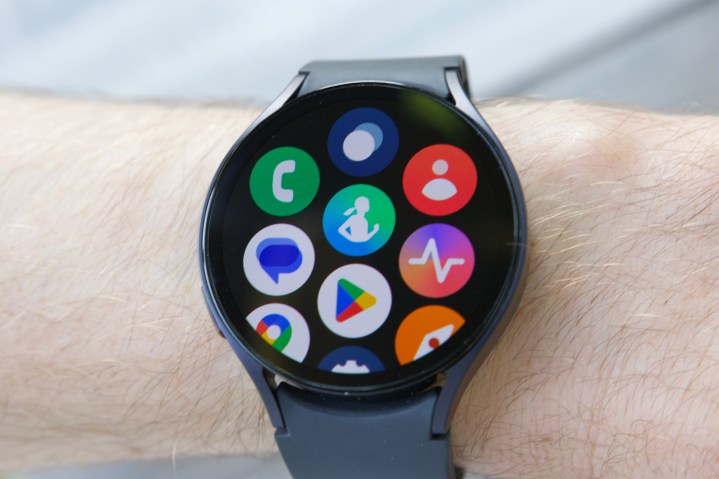
In our reviews of both watches, they handled the software and apps very well. The wearables are snappy, fast, and able to handle pretty much any app that you need to use on it without breaking a sweat. Even though they run Wear OS 4, it feels very much like Wear OS 3, which isn’t surprising. And because this is still Wear OS, apps themselves are still pretty limited, unfortunately.
During our testing with the watches, we did experience some minor issues with performance. For the regular Galaxy Watch 6, Joe Maring experienced very slow performance during the initial setup, though it went away after the hour or so it took for the process to fully complete. Another afternoon, he experienced an issue where the touchscreen refused to acknowledge input — the physical buttons still worked, but any touch input on the screen didn’t.
Andy Boxall, who reviewed the Galaxy Watch 6 Classic, also experienced some issues, including one where the device just refused to exit sleep mode and required a full restart.
Bugs like this are annoying, but they’re also pretty small complaints in the grand scheme of things. Both the Galaxy Watch 6 and Watch 6 Classic mostly run great, and outside of some quirks here and there, they deliver very good performance across the board.
Samsung Galaxy Watch 6 vs. Galaxy Watch 6 Classic: battery and charging
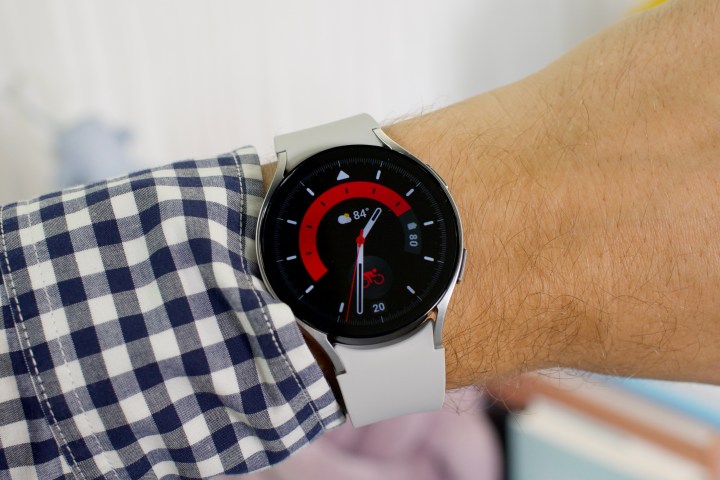
Samsung slightly increased the battery capacities for the Galaxy Watch 6 and Galaxy Watch 6 Classic. On the smaller 40mm Galaxy Watch 6 and 43mm Galaxy Watch 6 Classic, there is a 300mAh battery inside, which is an increase from last year’s 284mAh capacity. The larger 44mm Galaxy Watch 6 and 47mm Galaxy Watch 6 Classic have a 425mAh battery, up from 410mAh.
With these battery sizes, Samsung says you should get around 40 hours with the always-on display off or 30 hours with it on. This should be an improvement over last year’s models, as Samsung overpromised with 40 to 50 hours for the Watch 5 lineup despite the smaller batteries, which would actually only last about a day on average.
Our real-world testing with the watches has proven that they have much better battery life than the previous generation. In our review of the standard Galaxy Watch 6, we would end up with about 60% to 70% battery life remaining by the end of the day at 10 p.m. or 11 p.m. (starting the day around 7 a.m. or 8 a.m.). This was with the always-on display enabled, plenty of notifications, outdoor walks, and random tasks. And about seven hours of sleep would only take about 10% of the battery.
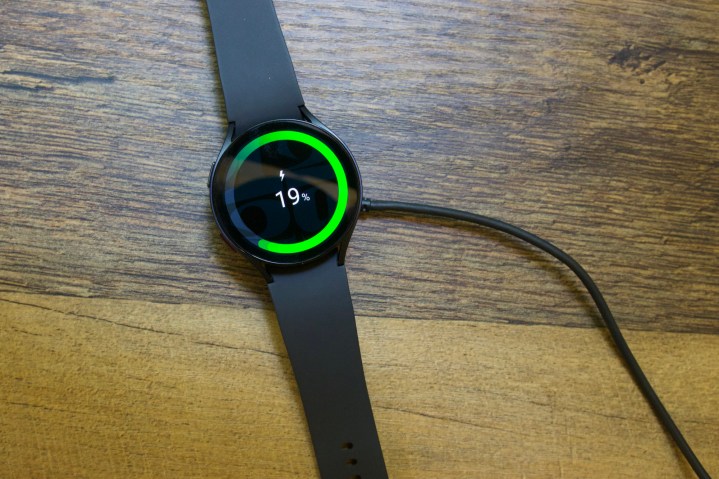
With the Galaxy Watch 6 Classic, we were able to get about a day and a half of use on a single charge, including sleep monitoring and 30-minute workouts without GPS tracking. We also got about 10% battery drain during sleep recording.
The Galaxy Watch 6 and Galaxy Watch 6 Classic still use the proprietary WPC-based wireless charger, so you have to use the included charger to charge these smartwatches. But they still charge up quickly, at least. From our reviews, the Galaxy Watch 6 gets about 30% charge after 15 minutes, but a full charge takes over an hour. The Classic model gets about 25% charge in 20 minutes but takes around 80 minutes for a full charge.
Samsung Galaxy Watch 6 vs. Galaxy Watch 6 Classic: fitness and health tracking
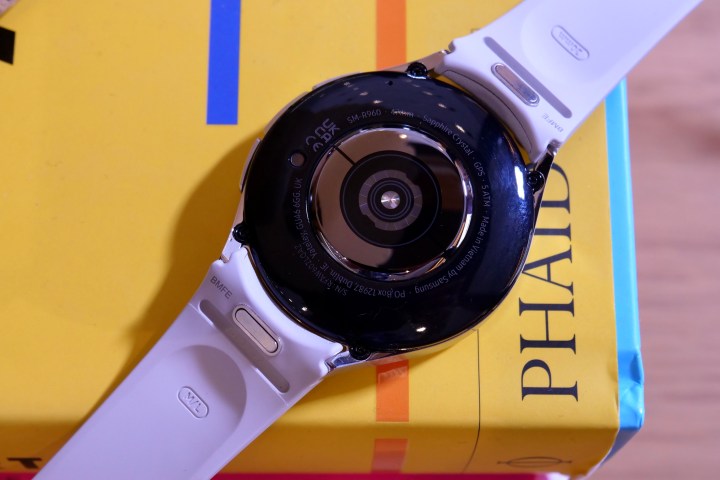
Samsung’s smartwatches have some of the best sensors around, making them excellent for keeping track of your fitness, health, and overall well-being.
Both the Galaxy Watch 6 and Galaxy Watch 6 Classic have Samsung’s 3-in–1 BioActive Sensor, which houses the optical heart rate, electrical heart signal, and bioelectrical impedance analysis sensors, which are the backbone of the health-tracking capabilities.
You’ll get complete step tracking, sleep tracking (and coaching), and even manual tracking for over 90 different workout types — including automatic tracking for some specific activities. With the bioelectrical impedance analysis sensor, you get extra benefits like measurements for body fat, skeletal muscle, body water, and more. And, of course, there is your standard 24/7 heart rate tracking, SpO2 monitoring, ECG, and a skin temperature sensor.

Heart-tracking capabilities on the Galaxy Watch 6 series have been upgraded to alert you whenever there are irregular heart rate rhythms detected. This is coming to the Galaxy Watch 5 lineup at some point, but it’s available out of the box for both Watch 6 models.
Sleep tracking has been significantly improved this year. Now if you wear the Galaxy Watch 6 series to sleep, you’ll get an overall Sleep Score, as well as extra data about the time you spent sleeping as well as the individual stages, blood oxygen levels, skin temperature, and even snoring! However, it won’t include separate heart rate data and no heart rate variability (HRV) reading.
The Galaxy Watch 6 Classic also has a 3D Hall sensor listed, which is used for positioning through a magnetic field. This seems to only determine the position of the physical rotating bezel, however, so it isn’t used for any kind of health or fitness tracking.
Samsung Galaxy Watch 6 vs. Galaxy Watch 6 Classic: price and availability
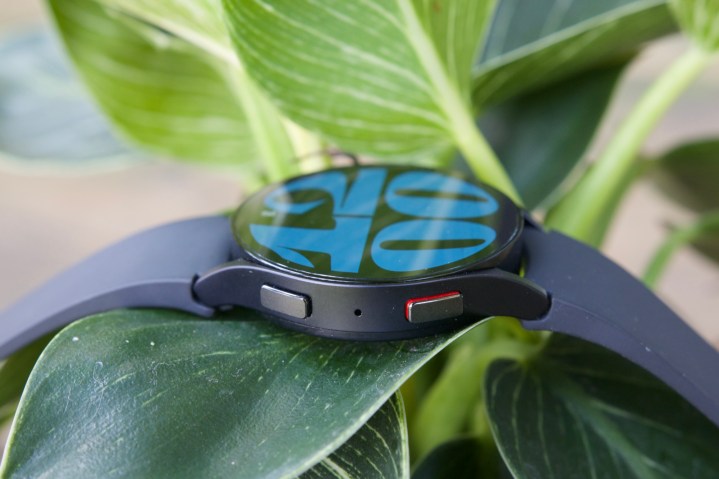
Both the Galaxy Watch 6 and Galaxy Watch 6 Classic are available now. You can buy them at Samsung.com, Amazon, Best Buy, and other retailers.
For the standard Galaxy Watch 6, it comes in two sizes: 40mm and 44mm. The 40mm version is available in Graphite and Gold colors, while the 44mm comes in Graphite and Silver. It costs $250 for the 40mm variant and $280 for the 44mm.
The Galaxy Watch 6 Classic comes in 43mm and 47mm sizes, and both come in Black or Silver colors. The 43mm starts at $340, and the 47mm model is $370.
Samsung Galaxy Watch 6 vs. Galaxy Watch 6 Classic: which one should you buy?
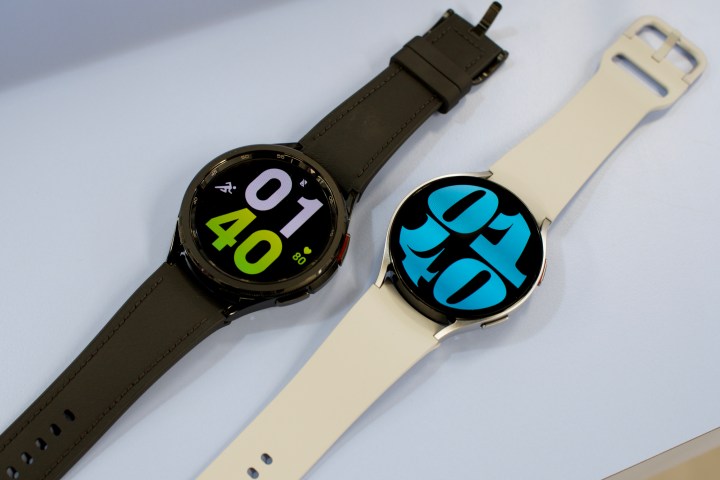
For the most part, both the Galaxy Watch 6 and Galaxy Watch 6 Classic are very similar in terms of what they can do with health and fitness tracking. But when it comes down to it, which one to pick depends on what kind of style you’re going for.
If you want something that is simple and sporty, then the standard Galaxy Watch 6 is the way to go. It also has smaller case sizes in case you’re worried about how a larger smartwatch would look on a small wrist. The regular Galaxy Watch 6 is also less expensive, which is helpful if you’re on a budget.
But if you prefer the look of a traditional timepiece and like the rotating bezel for navigating through the Galaxy Watch interface, then go for the Galaxy Watch 6 Classic. The stainless steel case also gives it a more professional look and feel than the aluminum of the regular version.
For most people, the regular Galaxy Watch 6 should be good enough. But if you want more elegance, then you can’t beat the Galaxy Watch 6 Classic.




